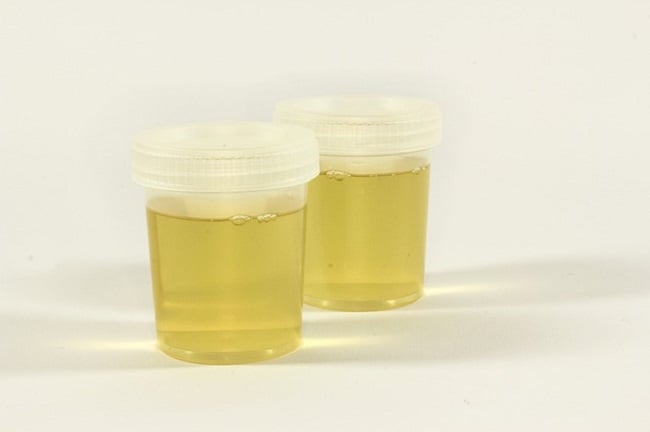CANSFORD LABS
19 things that significantly affect drug test results here in the UK
on Jun 5, 2019
With any drug tests, the result will be binary: either “yes, there are drugs in the donor’s system”, or “no, the donor is clean”. And often, that simple “yes or no” is all our clients are looking for.
But that simple “yes or no” doesn’t lead to a simple decision. In a family law case - where the future of a family unit could be at stake - it’s not just that binary result that matters.
- You may like: What are the exact levels of drugs detected in hair?
A “yes” could well mean that the donor is a regular, heavy drug user. But without accurate, expert interpretation of the results, you’re not getting the full picture.
Added to that, drug tests are a snapshot of a specific time period, and there are numerous factors that can have a significant impact on the results. Here are 20 of them.
General
1. Interpretation
A qualified and trained toxicologist (a chemist, biochemist, medic, pharmacist, forensic scientist or similar) should interpret every single test to rule out any extenuating circumstances that could affect the results. Without trained interpretation, it is impossible to draw a valid conclusion. Interpretation, though, should be shared with the requester of the test. A lawyer may not have the expertise or knowledge to judge whether the subject’s behaviour is consistent with the results, thus needing a clinical opinion from a counsellor or other medical advisor. This will, of course, depend on why the test has been requested in the first place.
2. Sample collection and chain of custody
Every test should be subject to stringent processes for sample collection, which will avoid the risk of mistakes or tampering. The chain of custody - which involves the documentation and traceability of the entire testing process - everything that was done, who it was done by, and a timestamp for every part of the process. This ensures that we can reconstruct the entire analysis for court proceedings, with 100% confidence and accuracy.
3. Time between collection and test
The longer the time that passes between collection and test, for certain tests, the more likelihood there is of external factors (like temperature) affecting the sample. This tends to affect liquid samples more than hair samples: the stability of the latter can be advantageous where time is an issue.
Urine testing
4. Hydration/dilution
In some instances, excessive water consumption can lead to a donor’s urine sample becoming diluted, thereby reducing the quantity of a drug that can be detected and causing the concentration detected to fall below the relevant cut-offs. This will generate a false negative - although the laboratory should be capable of checking the concentration of the urine through testing the specific gravity or the urine’s creatinine concentration.
5. Tampering
Because of the level of privacy required for a donor to produce a sample, it is possible for them to switch samples, or dilute them with water. Donors could even adulterate urine samples with nitrites to minimise the chances of drugs being detected.

6. Metabolic profile
Humans are all built differently, and that includes our metabolism. Active metabolism won’t hide drugs in the system, but it can affect the quantities. It is possible that a screening immunology test could test ‘positive’ as a result of the parent drug and its metabolites generating a single, combined result. The LC-MS/MS confirmation test, however, will deliver results for the drug and metabolites that are all below their respective cut-off levels.
7. pH (acidity/alkalinity)
In European drug testing guidelines, urine pH results within a range of 4 to 9 are considered normal: results lower than 3 or higher than 11 are considered to be adulterated. However, pH can be affected by foods, medical conditions and medications, so context is required in situations where it is outside the normal range.
Hair testing
8. Is it the right head?
Is the hair sample actually being taken from the right person? On the day, the trained collector should ask the donor for official photo ID, which will confirm that the test is correct and will help protect the chain of custody.
9. External contamination
Contamination can occur either through sebum or sweat, or via direct contact. It may be that the donor has been around someone smoking marijuana, or has accidentally come into contact with cocaine, which they’ve transferred from their hands to their hair. A reputable testing lab will be able to differentiate between external contamination and genuine drug use.
10. The choice of head or body hair
While head and body hair are equally accurate as markers of drug use, the two differ in terms of the timeframe of drug use that they cover. Because of the biology of body hair, it cannot be used for sectional analysis like head hair can.
11. The sample that is collected
The length of the hair that is collected will determine the timeframe for the analysis. With head hair growing at a rate of 1cm per month, each centimetre will represent a month’s history of drug use or non-use. A 3cm length of hair, therefore, will be no good if the last four months of a donor’s history are being investigated.
12. Hair colour
Research has shown that both external and ingested drugs bind well to eumelanin: a compound that is found in higher concentrations in black hair. This makes it more likely that drugs will be detected in black hair at low use but will not result in a testing bias: the rates of detection in black and blonde hair are not significantly different, even though the amount found can be.
13. Hair products or treatments
Bleach and other hair treatments can significantly reduce the percentage of drug metabolites retained by the hair. Just one treatment may leave traces of the drug, but regular treatments may destroy the metabolites altogether - meaning body hair must be used for testing.
Oral fluid testing
14. Recent drug use
The detection window for oral fluid testing is 0-2 days, meaning it is only suitable for testing “in the moment”. This means that a donor could, in theory, simply stop using a drug a few days before the test to ensure a positive result, and continue to take the drug after the test is over.
15. Screening vs. confirmation testing
A screening (immunoassay) test may give a positive result - but this positive simply means that the sample should be sent to the lab for confirmation (LC-MS/MS) tests. It may be that the LC-MS/MS then reveals a negative result: the screening could be positive purely because of the shape of the molecule of an innocuous substance similar to the drug, or because the levels of the drug found are below the cut-off levels. As an example, some codeine-based over the counter pain medications may give a positive screening result for opiates.
16. pH (acidity/alkalinity)
The pH of a donor’s oral fluid can affect the proportion of various drugs that will be ionised, and therefore that will be detectable. One study showed that increasing production of oral fluid by chewing citric acid candy, chewing gum or some other agent could, for example, “lower concentrations of codeine by about two- to six-fold.
Nail testing
17. Fingernails vs. toenails
As toenails grow more slowly than fingernails, a toenail sample will be able to reveal whether a drug has been used in roughly the previous twelve months. As fingernails grow slower, analysis of fingernail testing for drugs will only be able to show use in roughly the last six months.
18. Incorporation directions
The keratin in nails grows in two directions: both in length, as fingernails grow from the root, and thickness, with keratin being added to the underside of the nail as it grows.
19. Drug incorporation rates
Different drugs are incorporated into both fingernails and toenails at different rates - and these rates differ from the rate of incorporation into hair. A qualified laboratory will take these differing rates into consideration when analysing results.
Conclusion: find a great lab
All of this may make it sound like drug testing is more effort than it’s worth, but that’s certainly not the case. The important thing to remember is that a great lab will take all of these factors into account when collecting, testing and analysing: so it’s vital to find a great lab.
Before making the final decision on a drug and alcohol testing partner, ensure that you’re asking them the right questions to vet their credentials and scientific qualifications. In the absence of industry regulation (which we’re regularly banging the drum for), the answers you receive will help you to find a trusted partner who will make sure these 20 things do not have a significant effect on your test results.

John Wicks
John Wicks is one of the UK's leading experts in drug testing and has been for over 25 years. He is CEO and co-founder of Cansford Laboratories, a drug and alcohol testing laboratory based in South Wales. John is one of the ‘original expert minds’ who alongside co-founder Dr Lolita Tsanaclis, is responsible for bringing hair testing to the UK.
